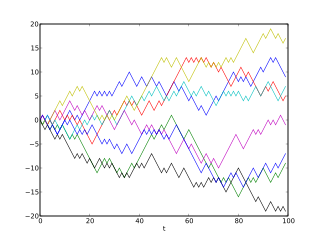Types
Front office quantitative analyst
In sales and trading, quantitative analysts work to determine prices, manage risk, and identify profitable opportunities. Historically this was a distinct activity from trading but the boundary between a desk quantitative analyst and a quantitative trader is increasingly blurred, and it is now difficult to enter trading as a profession without at least some quantitative analysis education.
Front office work favours a higher speed to quality ratio, with a greater emphasis on solutions to specific problems than detailed modeling. FOQs typically are significantly better paid than those in back office, risk, and model validation. Although highly skilled analysts, FOQs frequently lack software engineering experience or formal training, and bound by time constraints and business pressures, tactical solutions are often adopted.
Increasingly, quants are attached to specific desks. Two cases are: XVA specialists, responsible for managing counterparty risk as well as (minimizing) the capital requirements under Basel III; and structurers, tasked with the design and manufacture of client specific solutions.
Quantitative investment management
Quantitative analysis is used extensively by asset managers. Some, such as FQ, AQR or Barclays, rely almost exclusively on quantitative strategies while others, such as PIMCO, Blackrock or Citadel use a mix of quantitative and fundamental methods.
One of the first quantitative investment funds to launch was based in Santa Fe, New Mexico and began trading in 1991 under the name Prediction Company. [6] [13] By the late-1990s, Prediction Company began using statistical arbitrage to secure investment returns, along with three other funds at the time, Renaissance Technologies and D. E. Shaw & Co, both based in New York. [6] Prediction hired scientists and computer programmers from the neighboring Los Alamos National Laboratory to create sophisticated statistical models using "industrial-strength computers" in order to "[build] the Supercollider of Finance". [14] [15]
Machine learning models are now capable of identifying complex patterns in financial market data. With the aid of artificial intelligence, investors are increasingly turning to deep learning techniques to forecast and analyze trends in stock and foreign exchange markets. [16] See Applications of artificial intelligence § Trading and investment.
Library quantitative analysis
Major firms invest large sums in an attempt to produce standard methods of evaluating prices and risk. These differ from front office tools in that Excel is very rare, with most development being in C++, though Java, C# and Python are sometimes used in non-performance critical tasks. LQs spend more time modeling ensuring the analytics are both efficient and correct, though there is tension between LQs and FOQs on the validity of their results. LQs are required to understand techniques such as Monte Carlo methods and finite difference methods, as well as the nature of the products being modeled.
Algorithmic trading quantitative analyst
Often the highest paid form of Quant, ATQs make use of methods taken from signal processing, game theory, gambling Kelly criterion, market microstructure, econometrics, and time series analysis.
Risk management
This area has grown in importance in recent years, as the credit crisis exposed holes in the mechanisms used to ensure that positions were correctly hedged; see FRTB, Tail risk § Role of the global financial crisis (2007-2008). A core technique continues to be value at risk - applying both the parametric and "Historical" approaches, as well as Conditional value at risk and Extreme value theory - while this is supplemented with various forms of stress test, expected shortfall methodologies, economic capital analysis, direct analysis of the positions at the desk level, and, as below, assessment of the models used by the bank's various divisions.
Innovation
In the aftermath of the financial crisis[2008], there surfaced the recognition that quantitative valuation methods were generally too narrow in their approach. An agreed upon fix adopted by numerous financial institutions has been to improve collaboration.
Model validation
Model validation (MV) takes the models and methods developed by front office, library, and modeling quantitative analysts and determines their validity and correctness; see model risk. The MV group might well be seen as a superset of the quantitative operations in a financial institution, since it must deal with new and advanced models and trading techniques from across the firm.
Post crisis, regulators now typically talk directly to the quants in the middle office - such as the model validators - and since profits highly depend on the regulatory infrastructure, model validation has gained in weight and importance with respect to the quants in the front office.
Before the crisis however, the pay structure in all firms was such that MV groups struggle to attract and retain adequate staff, often with talented quantitative analysts leaving at the first opportunity. This gravely impacted corporate ability to manage model risk, or to ensure that the positions being held were correctly valued. An MV quantitative analyst would typically earn a fraction of quantitative analysts in other groups with similar length of experience. In the years following the crisis, as mentioned, this has changed.
Quantitative developer
Quantitative developers, sometimes called quantitative software engineers, or quantitative engineers, are computer specialists that assist, implement and maintain the quantitative models. They tend to be highly specialised language technicians that bridge the gap between software engineers and quantitative analysts. The term is also sometimes used outside the finance industry to refer to those working at the intersection of software engineering and quantitative research.


